 |
Official Webpage |



ARM ENG |
|||||
|
|||||||
Byurakan Astrophysical Observatory is a modern astronomical center, one of the most famous observatories in the former Soviet Union, as well as the Euro-Asian Continent. The Observatory is also scientific tourism attraction. It was founded in 1946 by outstanding scientist Viktor Ambartsumian.

High politicians, Nobel Prize winners and other outstanding scientists, many other honorable guests have visited Byurakan Astrophysical Observatory. At present, the Observatory has 95 associates, including 45 astronomers.
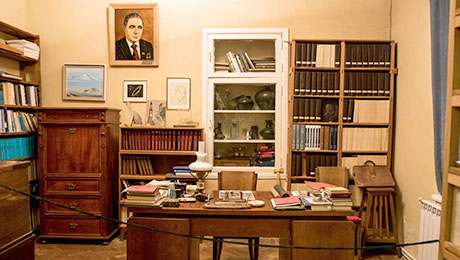
Due to new approaches and seminal scientific results the Byurakan astronomers have achieved high reputation and the Byurakan Astrophysical Observatory is recognized by the scientific community as one of the main centres for astrophysical research.

Besides being scientific and educational centre, the Observatory is famous for its unique architectural ensemble, rich botanical garden and world of birds, as well as it is one of the most frequently visited sightseeing of Armenia.

The BAO 1m Schmidt telescope is one of the largest Schmidt-type telescopes in the world and one of the most efficient astronomical telescopes in general.
Yerevan Observatory was built in 1933 (designed in 1921 by architect A. Tamanyan). The architectural design of the building includes a rectangular layout and a movable dome with cylindrical, interconnected scales. The telescope belongs to Yerevan State University.
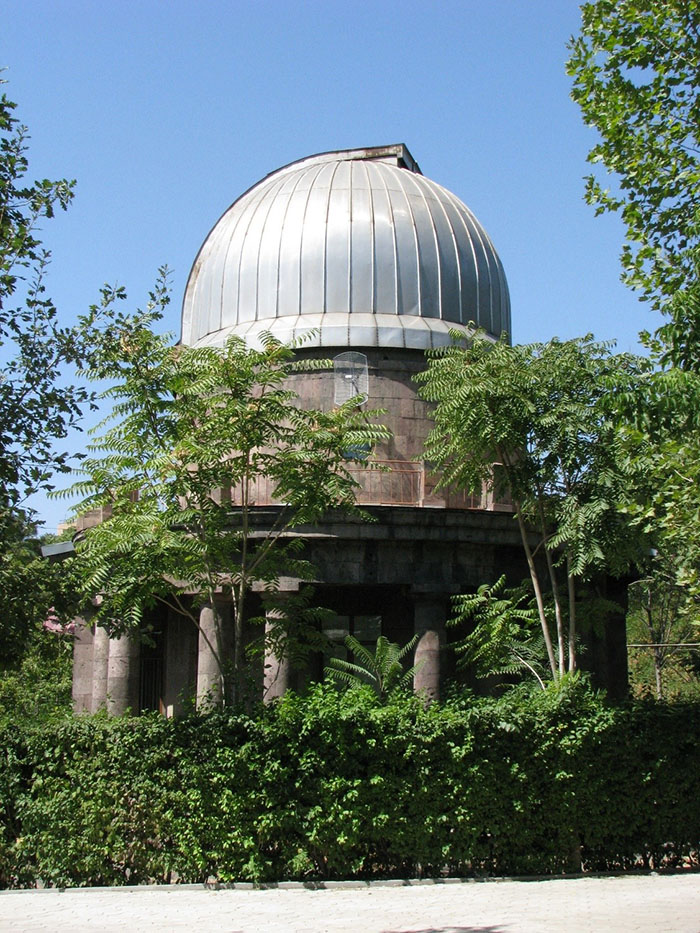
On the first floor of the building there is a large auditorium and offices, on the second floor a platform with all necessary observing devices.
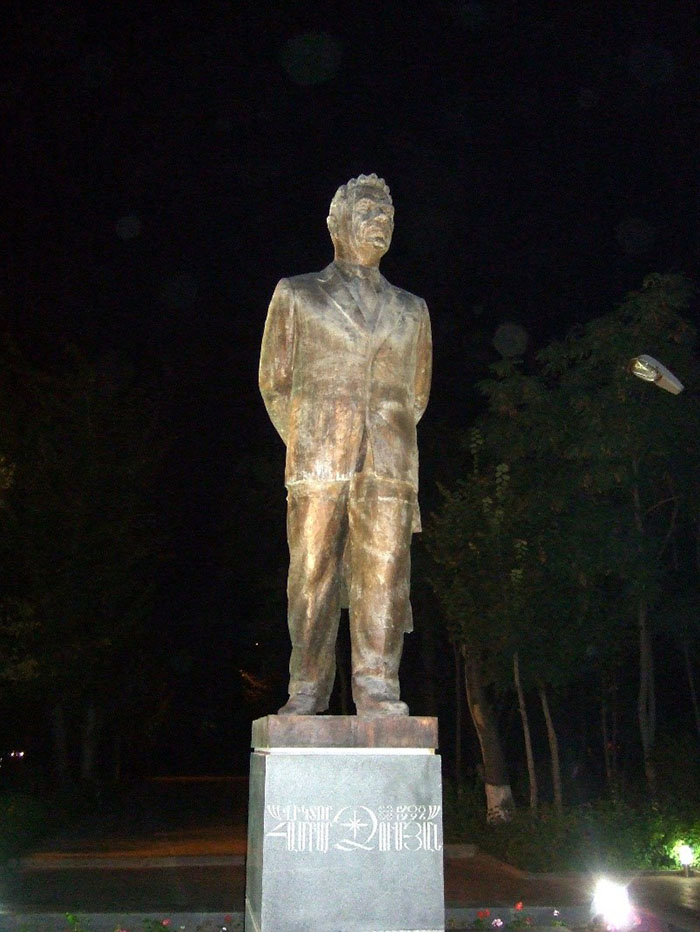
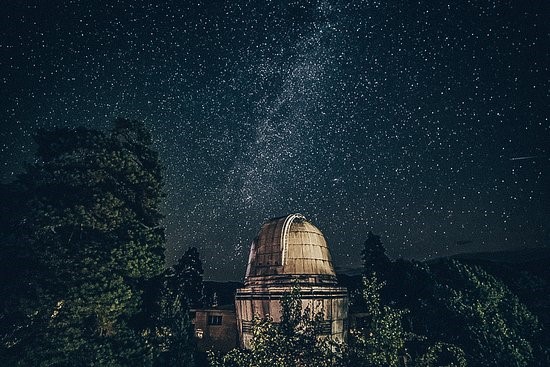
Astronomy in Georgia is generally represented in Abastumani Astrophysical Observatory found in 1932. It is one of the leading scientific institutes in the country. Several telescopes are operational today, as well as the instruments for atmospheric studies. In 2007 the Observatory was integrated with Ilia State University, merging scientific research and education which facilitated the growth of a new generation of researchers. There are groups of astronomers and astrophysicists in other Georgian universities and institutions as well. Georgian scientists collaborate with research centers and universities worldwide. Research groups participate in various international scientific projects. The interest in astronomy in Georgia has been growing, which increases future perspectives of its development in the country.
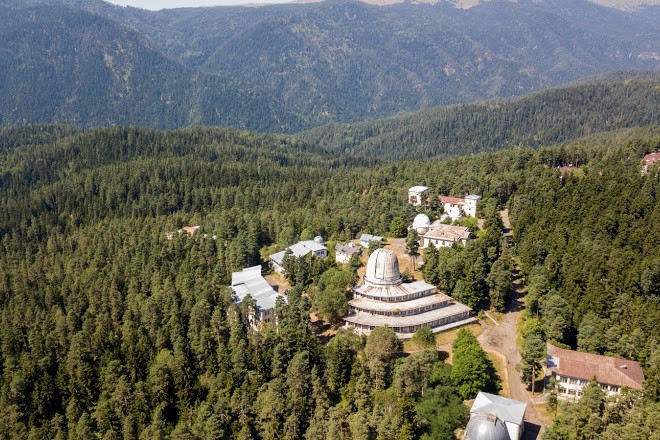
The Kanobili mountain that hosts this observatory is covered with coniferous forest and is 1650-1700 m. above sea level. The average number of clear nights are 150 per year.
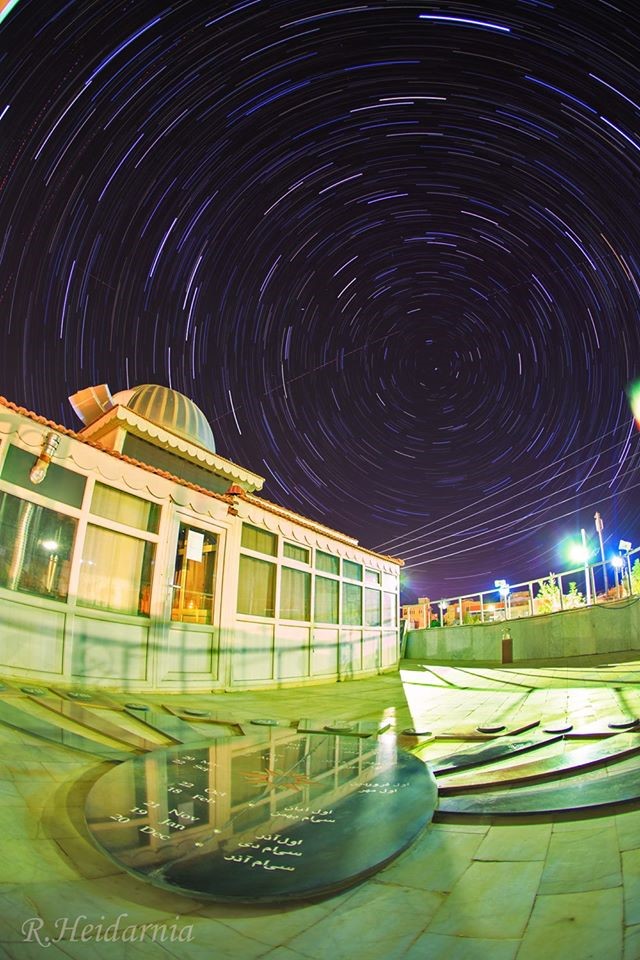
The RIAAM Observatory revivals and introduces the scientific and research will of Maragha’s Observatory. Besides, it shares itself in producing and introducing up-to-date science in astronomy and cosmology and doing research projects at international level. In this direction, the institute concentrates its main activity on developing research in the field of astronomy, astrophysics, cosmology and relevant technologies by designing plans which they are based on fundamental, development and applicative projects.
Fesenkov Astrophysical Institute (FAPHI) is a research institute in Almaty, Kazakhstan. The institute was founded in 1941 as the Institute for Astronomy and Physics of the Kazakh branch of the USSR Academy of Sciences, when a group of Soviet astronomers was evacuated during World War II from the European parts of the USSR to Almaty. In 1989 the Institute was renamed after Vasily Fesenkov, one of its founders.

FAPHI conducts both observational and theoretical research.The institute runs three observational bases in mountains near Almaty: Kamenskoe Plateau Observatory, Assy-Turgen Observatory and Tian Shan Astronomical Observatory.
Kamenskoye Plateau Astrophysical Observatory is located at an altitude 1 450 meters above the sea level.

The Tian Shan Astronomical Observatory (TShAO) is located 30 km south from Almaty, near the Big Almaty Lake, at an altitude of 2735.


1meter telescope is used for photometric investigations of variable stars in the Milky Way, eclipsing systems with moving apsis line, eclipsing stars with pulsing component; programs on exoplanets and white dwarfs are being implemented. The planned modernization and automation of the second 1-meter telescope will expand TShAO opportunities.
The observatory is located on the Assy-Turgen plateau, 2750 meters above sea level, 85 km East from Almaty. It was built by Fesenkov Astrophysical Institute, and observations began to be performed since 1981. By 1991, two telescope towers and hotel facilities were raised, and a 1-meter telescope was launched.
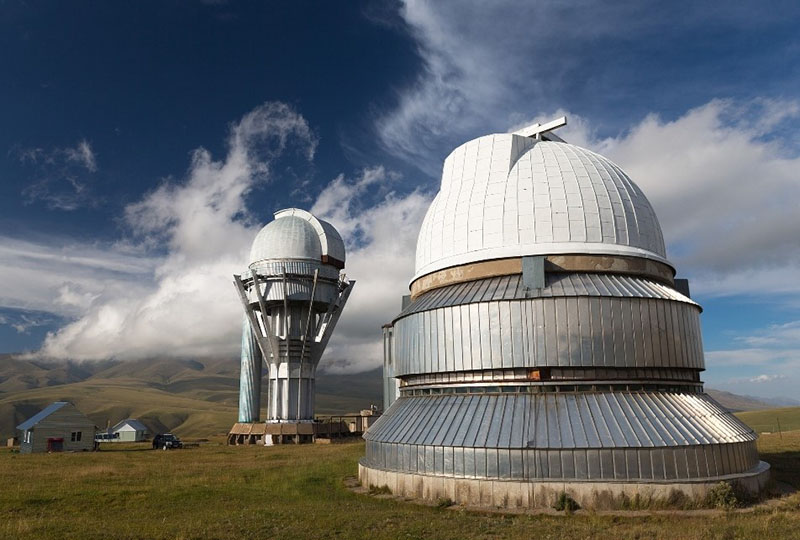
Assy Turgen is the only observatory in Kazakhstan with ideal astroclimate: high transparency of the atmosphere, no light pollution and very small (average) turbulence.
The modern astronomy sciences in Tajikistan started from the Tajik Astronomical Observatory (TAO), in 1932. In 1958 was transformed into Institute of Astrophysics of Tajik Academy of Sciences of the USSR. The Institute started research on natural and man-made space objects through international projects and programs.

Fundamental researches were conducted on meteors and Earth’s upper Atmosphere, comets and asteroids, stars and galaxies.
Now at the Institute of Astrophysics there are three astronomical observatories at different altitudes from the sea level: Hissar Observatory (HisAO, altitude 730m), the observatory “Sanglokh” (height 2300m) in Dangara area and its branch, the observatory “Pamir” (height 4350m) in Murghab district of Badakhshan.
The Institute has introduced the modern methods and technologies for the monitoring of bright meteors. Fireballs network are created in Tajikistan. The basic image of 200 fireballs and for 150 of them the main parameters of the atmospheric trajectories, radiant, velocities, orbits and physical characteristics are obtained.

The Institute publishes a scientific journal “Bulletin of the institute of Astrophysics of the Republic of Tajikistan”, which provides information on the history of astronomy. By the initiative of the institute in 1999 at the Tajik National University, the specialty of “Astronomy” was established. Hissar Astronomical Observatory of the Institute became the base for this specialty. At the institute, the Astronomical Society of Tajikistan provides training to produce qualified personnel in Tajikistan.
The Institute has started rebuilding and modernizing its astronomical observatories and have installed and commissioned a 60cm reflector (Carl Zeiss in the observatory “Sanglokh”). In 2007, introduction of new equipment (i.e. charge system) and computer technology astrophysical observations of cosmic objects were started.

This has enabled the institution to participate successfully in the projects of the International Science and Technology Center, in the International Programme PULKON, in the projects of the International Year of Astronomy, UNESCO and the UN. The active cooperation of the institute with the Institute of International Astronomical Union. In 1993, Tajikistan became a member of the Union with the International Committee on Space Research (COSPAR). In addition, projects with the Euro-Asian Astronomical Society and other International scientific organizations were restarted.
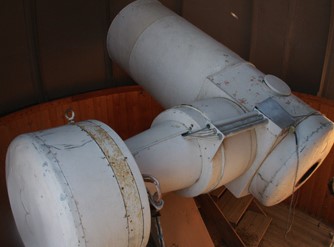
The observatory “Pamir” (height 4350m) is in Murghab district of Badakhshan. The regularities of the destruction of the comet’s nucleus in the atmosphere of stars and planets, including Earth’s atmosphere are studied; the rate of atmosphere of positive and negative ions generation in comets, and the properties of the surface of some asteroids were investigated.
Kandilli Observatory, or more formally Kandilli Observatory and Earthquake Research Institute is a Turkish observatory, which is also specialized on earthquake research. It is situated in Kandilli neighborhood of Üsküdar district on the Anatolian side of Istanbul, on the top of a hill overlooking Bosporus.

The observatory, named originally "Imperial Observatory" (Ottoman Turkish: Rasathane-i Amire) as established in 1868 in the Rumelian side of Istanbul, was dedicated mainly to weather forecasting and accurate timekeeping.
During the 31 March Incident in 1909, the observatory was destroyed by the rebels. Next year, however, Professor Fatin was tasked with the reestablishment of the observatory. He chose the present place as the location in of the observatory. Systematic research works began on July 1, 1911. After several name changes, the name "Kandilli Observatory, Astronomy and Geophysics" came into use in 1940. In 1982, the observatory was annexed to Boğaziçi University. Later, the institution was renamed Kandilli Observatory and Earthquake Research Institute (KOERI).
The Astronomy Laboratory, which can be visited within the scope of Kandilli
Observatory visit program, accepts school and group visitors every Wednesday and
Thursday during the academic year.
Department of Astronomy and Space Sciences and the Observatory of Istanbul University constitutes a modern complex for education, research and the public outreach activities. This is the first astronomy department in Turkey and the first observatory of the Republic of Turkey. Nowadays, with the inauguration of a planetarium in the department, public outreach activities become more efficient than ever. Annually almost 20.000 people visit the complex. Most of the visitors are school kids vary from primary to high school.

A typical visit includes a planetarium show, visiting historical telescope and the dome, visiting Gleissberg Astronomy Collection and solar observation if the weather permits. Monthly public nights have been organized by the Istanbul University Observatory during which a public talk accompanied with telescope viewing, planetarium show and the visit to the historical telescope. Besides, student’ astronomy clubs in the department also organize public events quite often. Detailed information for the visits can be found on the following link: http://astronomi.istanbul.edu.tr/bilimtoplum/../turkey/images/brosur/btb-en.jpg
Ankara University Kreiken Observatory was founded by Prof. Dr. E. A. Kreiken more than fifty years ago, back in 1954. Ahlatlıbel district, 18 km south of Ankara, an easy-to-reach area and away from city lights back then, was chosen to be the location of the observatory due to the fact that the conditions had been suitable for astronomical observations for almost 300 days of the year. With more recent work in the observatory, now there are seven telescopes at the facility to use for scientific and popular purposes. For scientific studies, 35 cm diameter T35 telescope with a high-tech CCD camera and 40 cm diameter T40 Kreiken telescope with a medium resolution echelle spectrograph are being used. A brand new 80 cm telescope (T80) has just been installed in 2019 equipped with another medium resolution echelle spectrograph and an imager at each of the Nasmyth focii. A 15 cm diameter Coude telescope, 20 cm diameter Meade LX200 ACF telescope, 12.5 cm diameter Meade ETX-125 telescope and SolarMax II Solar Telescope are also in use for the popular events that the observatory organizes regularly.
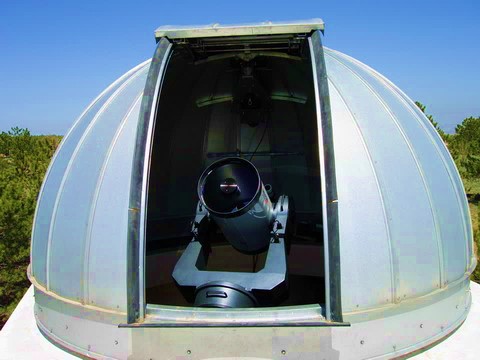
Those public events can be grouped in two as regular public observing nights and special astronomy events. In the public events, which are organized once in a month from March to November, various talks related to interesting astronomy subjects are given by professional astronomers and graduate students, in addition to the observing runs of popular celestial objects (such as Venus, Jupiter, Moon, etc.) observable at the time. In the special events, it is possible to observe periodic events such as lunar & solar eclipses, meteor showers, and planetary transits with the observing tools in the facility used for popular observations. Schools and large groups also visit the observatory regularly, based on their appointments. During these events, popular subjects are presented with respect to the average age and the level of the group; and an observing run is organized based on the time of the day of the visit, whether it’s a night observation or a solar observation. Within these three categories of events (public nights, special observations and regular visits) more than 10000 people visit the observatory each and every year. Some important celestial events (e.g. total lunar eclipses or Perseid meteor showers) attract over 3000 people on their own.
Soon after the establishment of the Astronomy Department at Ege University in 1963, a project to establish an observatory was developed. Kurudağ was chosen as the location for the observatory, a site far from urban light pollution but close (17 km (11 mi)) to the university's campus. The first instruments of the observatory were a 15-cm Unitron telescope, a Foucault pendulum and an Iris photometer. By 2013, night observations were becoming difficult due to glare from urban encroachment.
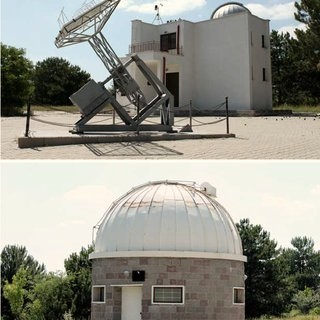
Currently, the Ege University Observatory has four telescopes with 48-cm, 40-cm, 35-cm and 30-cm diameter which are used for scientific studies, and many small telescopes which are used in the practice of students and popular astronomy studies.
The ÇOMÜ Ulupınar Observatory (UPO) (Turkish: Ulupınar Gözlemevi) is a ground-based astronomical observatory, which was established in 2001 and formally opened on 19 May 2002. It is also known as Çanakkale Observatory or the University Observatory. The Ulupınar Observatory is part of the Çanakkale Onsekiz Mart University (ÇOMÜ) Faculty of Science and Arts.
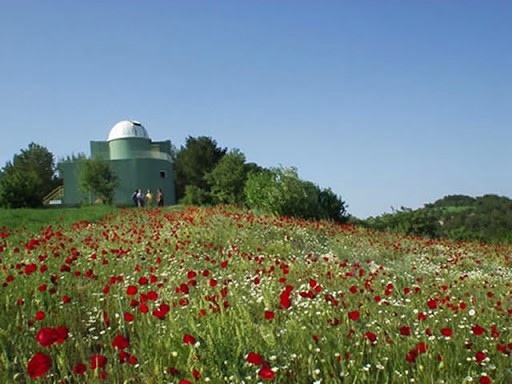
The observatory is located at an altitude of 410 m (1,350 ft) on the southern slope of the Radar Tepesi in Ulupınar village 10 km (6.2 mi) south-east of downtown Çanakkale and 5 km (3.1 mi) from the university's main campus. The observatory and its research center premises include a library, a workshop, a classroom, a conference hall and living quarters for night observing astronomers.
Ulupınar Observatory began its activity with a donated 0.40m telescope. It has expanded to a facility having seven telescopes operated by 30 scientists. There are three computer-controlled optical telescopes with several other instruments including the biggest telescopes in Turkey, among them a 1.22m telescope made in Germany. There is also an automated meteorological station fully active at the observatory.
The construction of the center started simultaneously with the establishment of the Faculty of Science, Department of Astronomy and Space Sciences. While the Department of Astronomy and Space Sciences was established in 1999, Radio Astronomy, which has not been studied in the country, has been chosen as the main field of study at the academic level. Specialization was targeted in this regard and the forward-looking structure of the department was realized in this way.
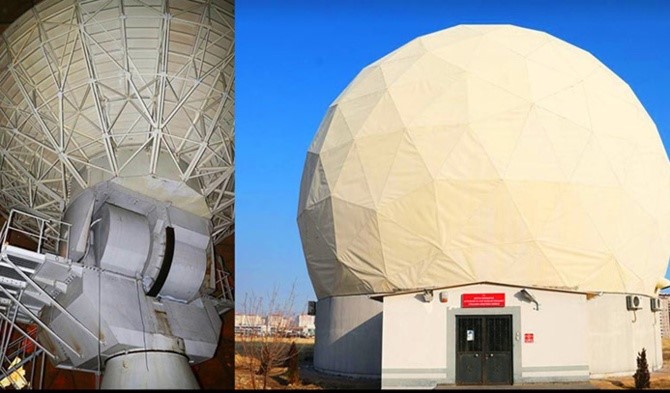
For booking visit to the observatory, you should visit the following link: http://astronomi.erciyes.edu.tr/?page_id=48
The building of the T60 telescope at the TUBITAK National Observatory (TUG) located at an altitude of 2500m on Mount Bakirlitepe in Saklikent District of the city of Antalya.
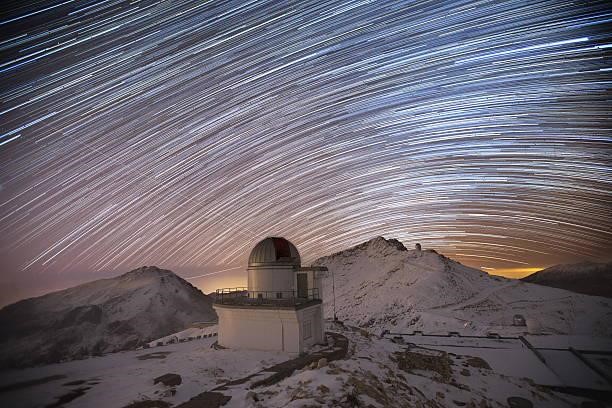
Telescope buildings, the Computer Centre and a hotel at the TUBITAK National Observatory (TUG) are located in Saklikent District of the city of Antalya. Seen at the top is the building of the Russian-Turkish RTT-150 optical telescope. RTT-150, the largest telescope of the observatory with a 150cm main mirror, was built in 1995 by St-Petersburg-based PLC LOMO.
The observatory is located at an altitude of 3,170 meters (10,400 feet) in the Karakaya Hills in Konakli village of eastern Erzurum province. The telescope is designed as a multipurpose equipment with scientific objectives such as cosmology studies, galaxies studies, solar system minor bodies studies, understanding of stars formation, planets studies, etc.

Construction of the facility began in 2012 with the support of the Turkish Presidency and the Astrophysics Research and Application Center of Erzurum’s Ataturk University. The observatory will receive the first light from space by the end of 2021.
ISTEK Foundation empowers modern and resourceful generations of students along the lines of Ataturk's principles and philosophies. Our foundation, founded by Bedrettin Dalan in 1985, has extended education from Kindergarten to University with 11 Primary Schools, 10 High Schools, 7 Science High Schools and Yeditepe University. ISTEK Foundation Belde Schools Science Center is a public science outreach project of the ISTEK Foundation. The Science Center comprises of a museum of astronomy, a digital planetarium and an observatory.
The Astronomy Museum is the first of its kind in Turkey. The museum comprises of a replica of the Lion Horoscope from Mt. Nemrut, a rich collection of meteorites, including metallic, chondrite, pallasite and tektite samples; scaled models of the Sun, planets, constellations and various astronomical objects; and interactive displays on large scale structure and life in the universe.

The planetarium is located above the museum. The 11 meter metal dome structure seats 50 under a 9 meter spherical screen. The fully digital system uses Starry Night and Layered Earth software enlivened by a state of the art sound system.

Located on the roof overlooking the Bosphorus the observatory houses two separate instruments for stellar, planetary and solar research.
The main telescope is a 40 cm Schmidt-Cassegrain catadioptric system. The telescope is mounted on a Software Bisque robotic mount and it can be controlled remotely.
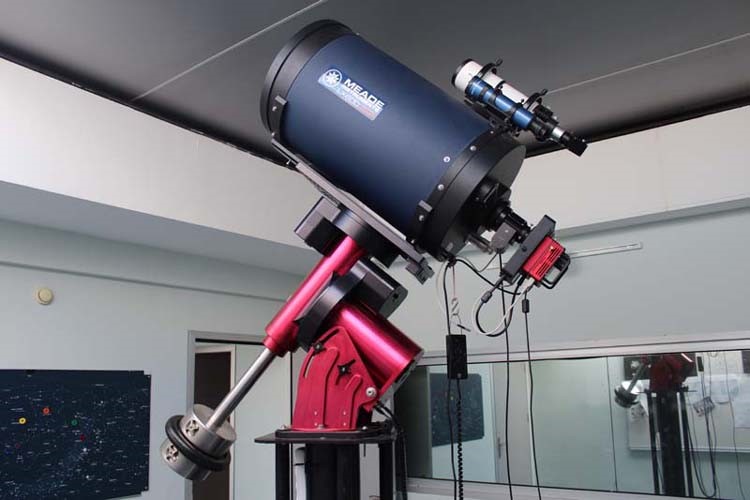
The observatory is located on the roof overlooking the Bosphorus the observatory houses two separate instruments for stellar, planetary and solar research. The main telescope is a 40 cm Schmidt-Cassegrain catadioptric system. The telescope is mounted on a Software Bisque robotic mount and it can be controlled remotely.
Ulugh Beg Astronomical Institute (UBAI) of the Uzbek Academy of Sciences is the oldest scientific institution not only in Uzbekistan but in the whole Central Asia as well. It was founded as Tashkent Astronomical observatory in 1873 and reorganized to UBAI in 1966. It was known as an important astrometric center of the FSU. Uzbek Academy of Sciences.

At present the researches carried out in UBAI are mostly based on the observational data obtained at Maidanak astronomical observatory, located at a distance of 120 km south of the famous historical city of Samarkand.
Maidanak observatory is located at the south east of the Republic of Uzbekistan at a distance of about 500 km from Tashkent and 120 km south of famous historical city of Samarkand.

It lies on the spurs of the Pamir and Alai mountain system at 2600m above sea level. Mount Maidanak was selected for astronomical observations in the late 60-s as a result of a ten-year long site assessment campaign organized at the Ulugh Beg Astronomical Institute (UBAI) of the Uzbekistan Academy of Sciences.